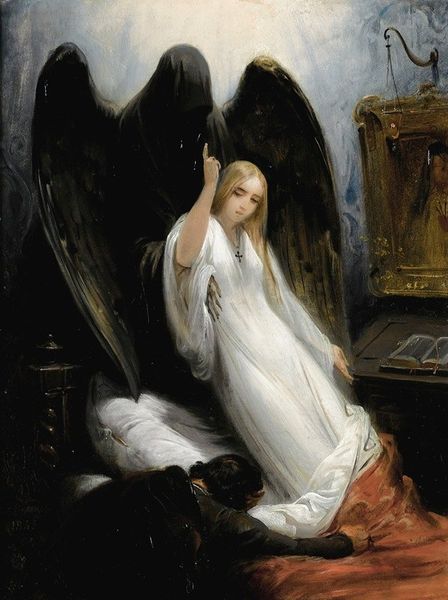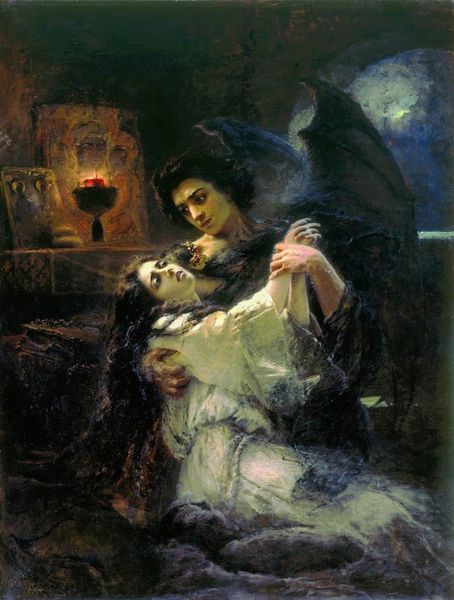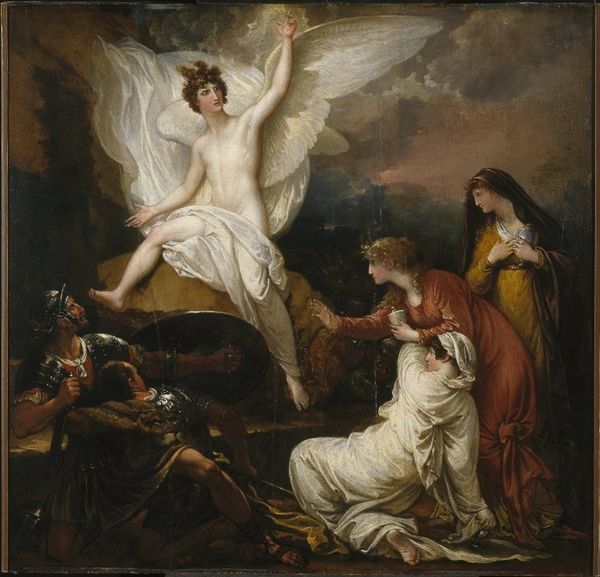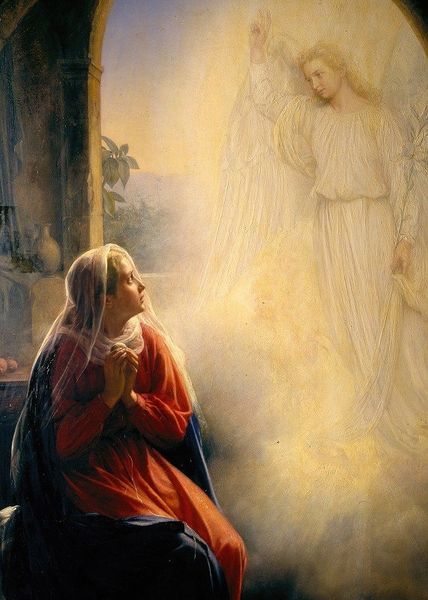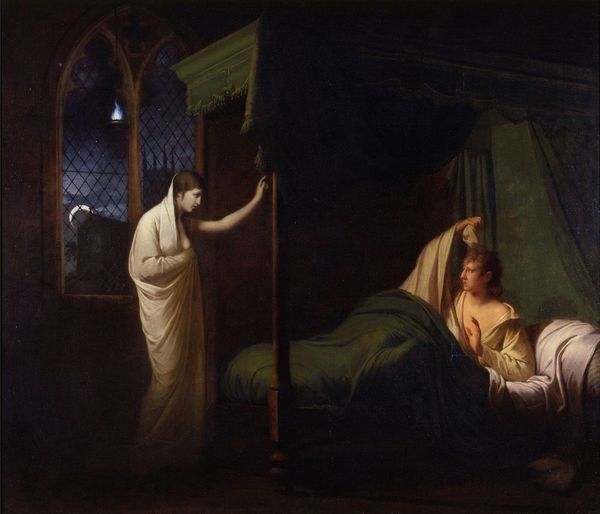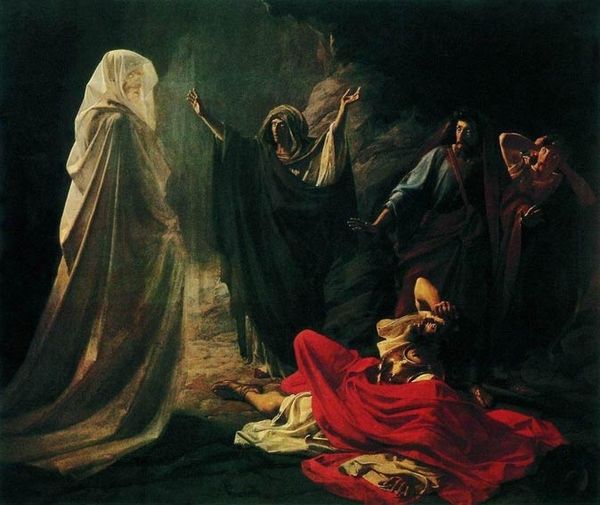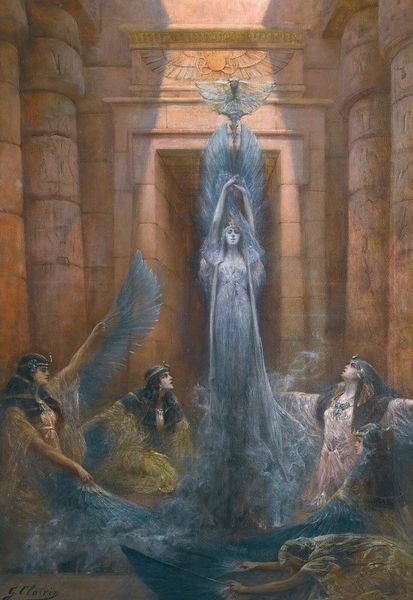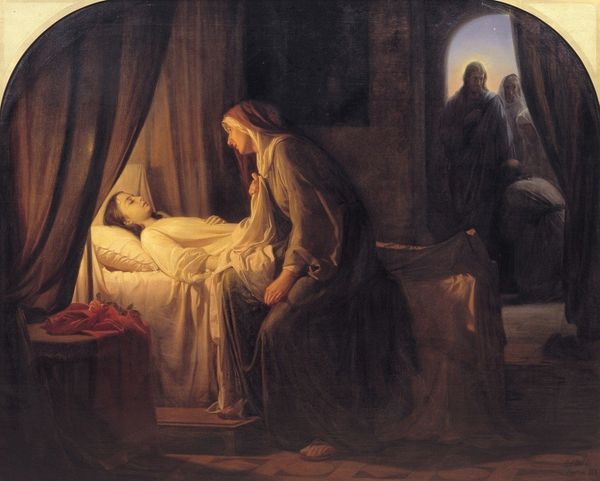
Copyright: Public Domain: Artvee
Curator: This is Horace Vernet’s “Angel of Death,” painted in 1851 using oil on canvas. Editor: It has an undeniably somber, weighty mood. The color palette is predominantly cool, muted tones, except for that almost aggressively bright gold fabric on the bed. It draws the eye, but not in a comforting way. Curator: Notice how Vernet has structured the composition around contrasting light and shadow. The angel and the figure beside the bed are bathed in an ethereal light, juxtaposed against the dark figure of death looming behind them. This highlights the drama and the allegorical elements. Editor: Yes, and I can’t help but consider the broader context. Vernet created this during a time of significant social upheaval in Europe. The “angel” seemingly shielding the woman, as well as the man praying by her bedside, echoes sentiments of the bourgeoisie attempting to resist, perhaps even deny, a rapidly approaching future—in which traditional societal roles would have been upended. It speaks to a desire to uphold traditional, patriarchal, family-oriented paradigms of comfort during times of uncertainty. Curator: I see your point. However, consider how the artist has employed precise brushstrokes to render the delicate details of the angel’s wings and the drapery, to imbue the scene with a sense of realism. The interplay between the earthly and divine is not simply narrative but also about pictorial tensions between the tangible and the symbolic. Editor: Absolutely, and those symbols, the very icons in the background reinforce this sense of traditional beliefs providing shelter against a looming darkness and an embrace of change that such uncertainty represents. But from another perspective, the stark dichotomy almost flattens out complex political concerns and it limits itself within fairly rigid and reactionary social ideas. Curator: Still, Vernet uses the dramatic chiaroscuro and precisely rendered details to elevate the subject to something sublime. The scene transcends any one political viewpoint because he's also interested in more timeless considerations about mortality itself. Editor: Perhaps you're right, though the symbolic narrative and the sociopolitical climate during which the painting was created must be viewed together when decoding its message and enduring value. Curator: I find the formal elements really draw me to that sublime experience and emotion of an era so effectively. Editor: It really opens a new way to contemplate and engage with those perspectives from Vernet's era, with our own.
Comments
No comments
Be the first to comment and join the conversation on the ultimate creative platform.
